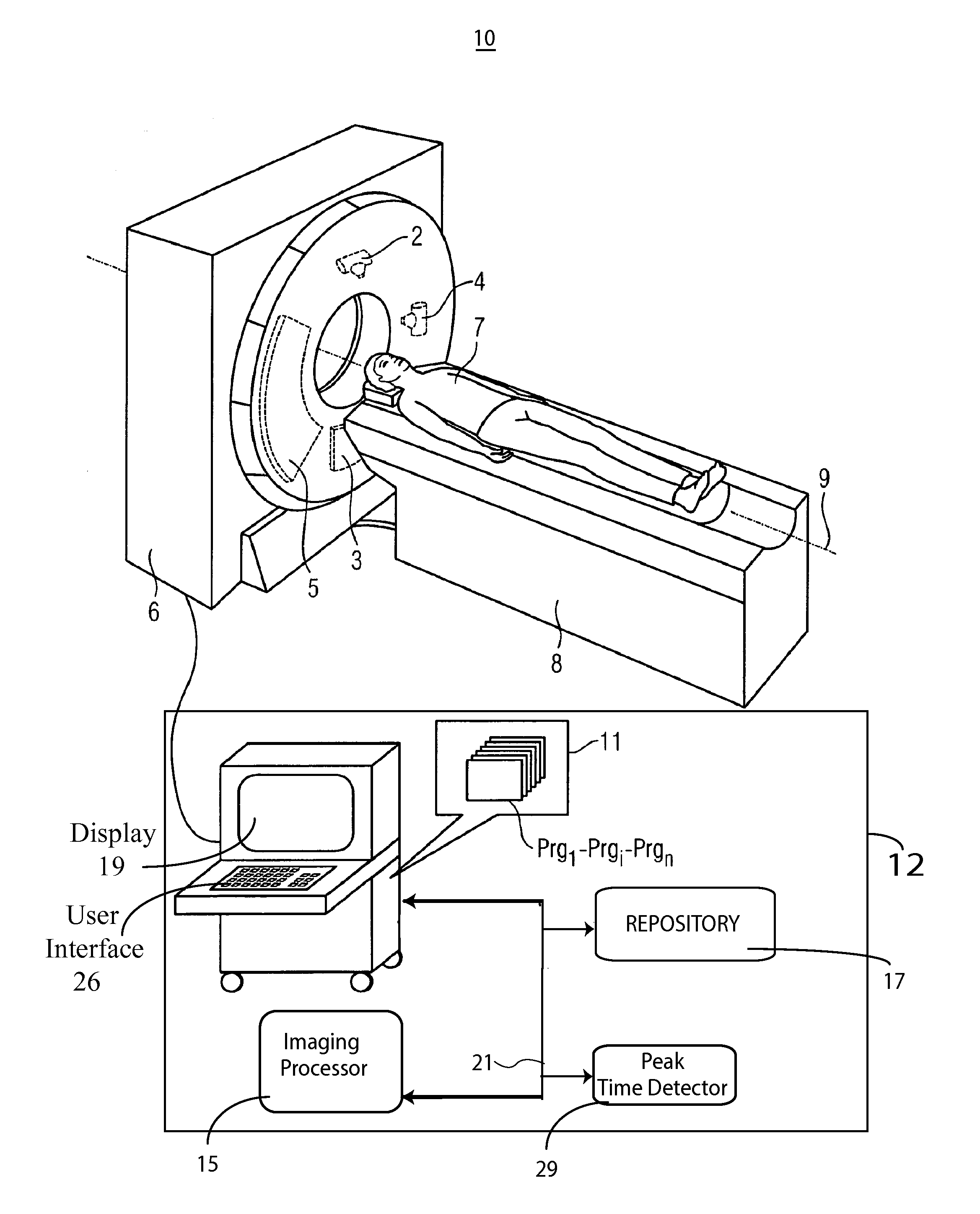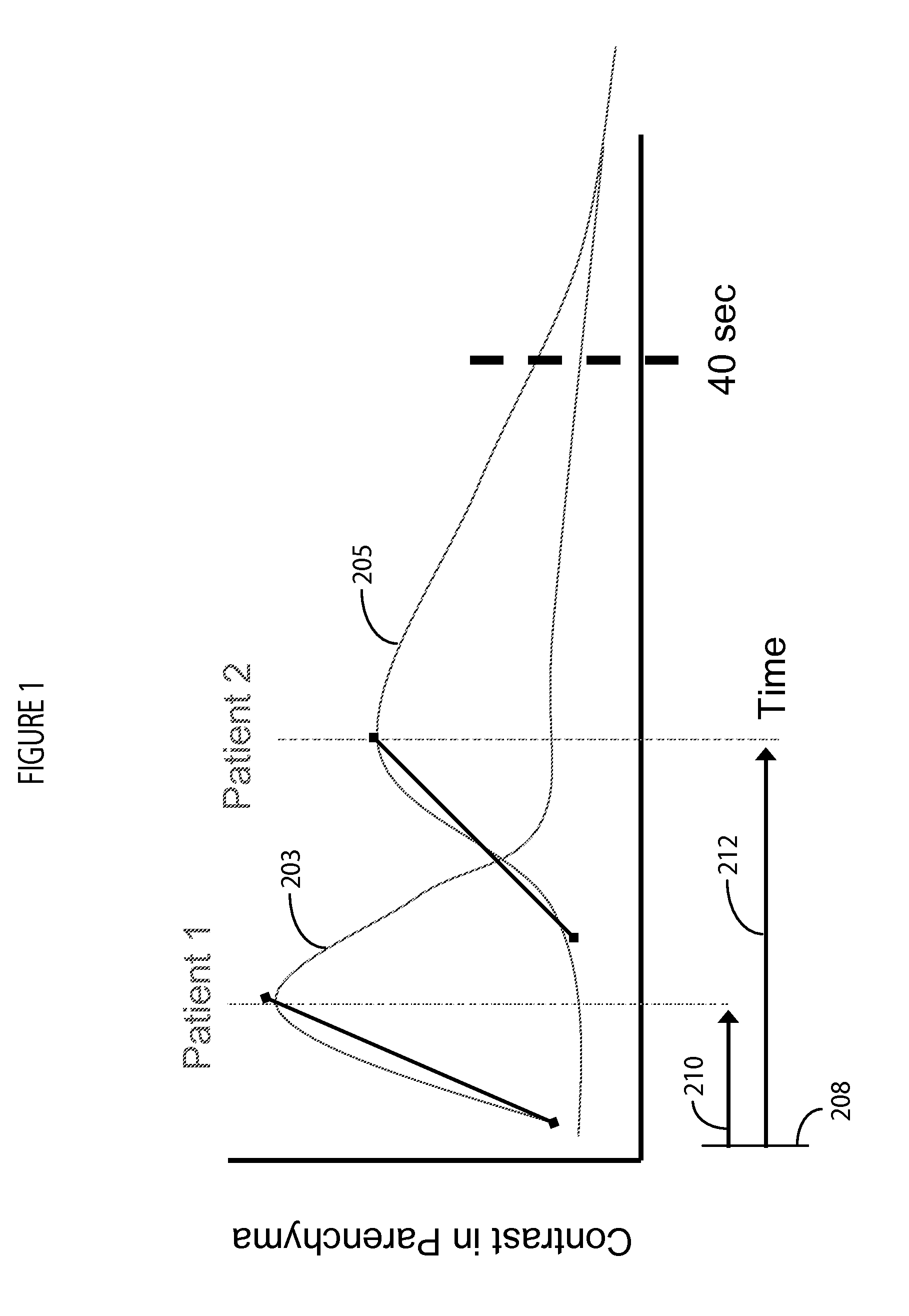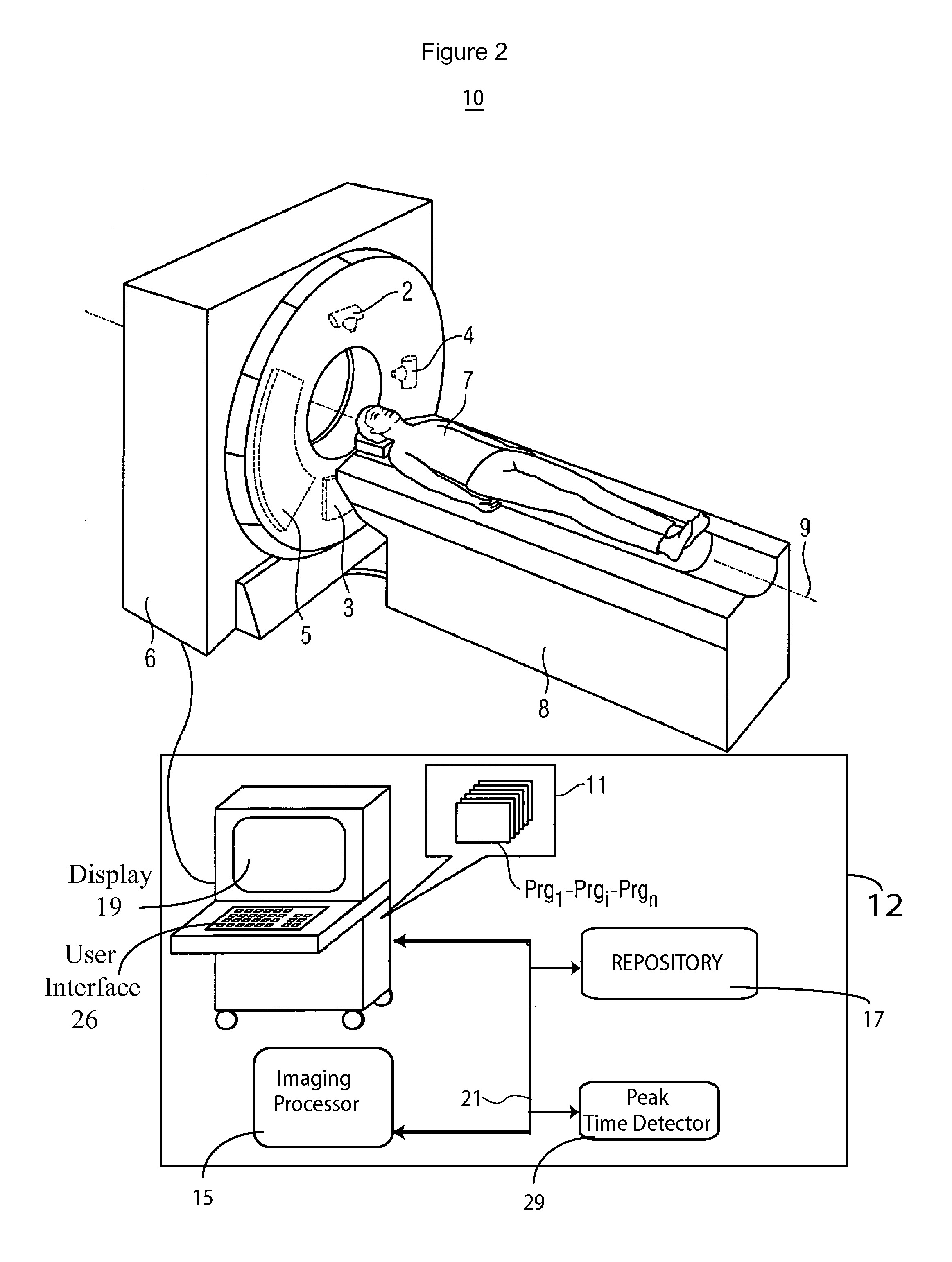Contrast Agent Perfusion Adaptive Imaging System
a technology of adaptive imaging and contrast agent, which is applied in the field of adaptive imaging of contrast agent perfusion, can solve the problems of long contrast agent “fall off” period, limited image acquisition in the presence of contrast agent in known imaging system (e.g. ct (computed tomography) system), and patients may be over-radiated
- Summary
- Abstract
- Description
- Claims
- Application Information
AI Technical Summary
Benefits of technology
Problems solved by technology
Method used
Image
Examples
Embodiment Construction
Definition
[0011]Hounsfield unit (HU)—indicates X-ray radiation absorption and attenuation of CT scanner radiation on a scale comprising a linear transformation of an original linear attenuation coefficient measurement into one in which the radiodensity of distilled water at standard pressure and temperature (STP) is defined as zero Hounsfield units (HU), while the radiodensity of air at STP is defined as −1000 HU. In a voxel with average linear attenuation coefficient, the corresponding HU value is therefore given by:
HU=1000×μX-μwaterμwater
Where μwater is the linear attenuation coefficient of water.
[0012]A system according to invention principles monitors a contrast bolus, and detects a contrast agent peak in the parenchyma by determining the peak in real-time (time-to-peak). The system adaptively adjusts an image acquisition rate and period in response to patient specific contrast agent timing (time-to-peak). The acquisition rate in one embodiment is selected by a user if there is ...
PUM
 Login to View More
Login to View More Abstract
Description
Claims
Application Information
 Login to View More
Login to View More - R&D
- Intellectual Property
- Life Sciences
- Materials
- Tech Scout
- Unparalleled Data Quality
- Higher Quality Content
- 60% Fewer Hallucinations
Browse by: Latest US Patents, China's latest patents, Technical Efficacy Thesaurus, Application Domain, Technology Topic, Popular Technical Reports.
© 2025 PatSnap. All rights reserved.Legal|Privacy policy|Modern Slavery Act Transparency Statement|Sitemap|About US| Contact US: help@patsnap.com



